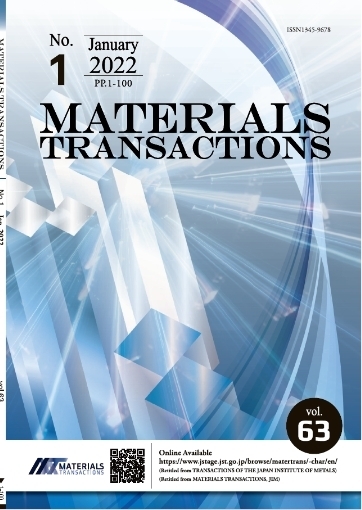Nanocluster Control for Achieving High Strength Aluminum Alloys
Tatsuo Sato
pp. 861-869
抄録
High performance aluminum alloys with high strength, ductility and formability are strongly required and can be achieved through controlling precipitation microstructures, especially by utilizing nanoclusters, i.e. ‘nanocluster assisted microstructure control’. Nanoclusters are formed in the early stage of phase decomposition/precipitation and affect both the strength and subsequent precipitation, resulting in improved mechanical properties. Nanoclusters are small aggregates of solute atoms rapidly formed due to the strong attractive interaction among solute atoms and different from GP zones in composition and morphology. The formation kinetics and thermal stability of nanoclusters are affected by microalloying elements. The advanced 3-dimensional atom probe (3DAP) can detect nanoclusters and makes it possible to quantitatively determine their chemical composition, size and number density. In this article, the definition, formation behavior, influence on precipitation and mechanical properties of nanoclusters are presented based on our recent research on aluminum alloys. The combined addition of Mg and Ag to an Al–Cu alloy accelerates the nanocluster formation on the {111} planes of the matrix, resulting in a preferential formation of GP111 zones. In an Al–Zn–Mg alloy the addition of Ag increases the number density of finer GP zones and simultaneously decreases the width of precipitate free zones (PFZs). These are due to the strong attractive interaction of Ag with Mg and vacancies. On the other hand, the influence of nanoclusters on precipitation in Al–Mg–Si alloys is more complicated. It is emphasized that the well-known positive or negative effect of two-step aging basically originates from the Mg/(Mg + Si) ratio in the nanoclusters. Si-rich clusters cause the negative effect, while Mg–Si clusters cause the positive effect. The strength and ductility of aluminum alloys can be significantly improved by controlling nanoclusters. This Paper was Originally Published in Japanese in Materia Japan 56 (2017) 338–345. Figure 15 is modified with adding figures and Fig. 18 is newly added.
他の人はこちらも検索
MATERIALS TRANSACTIONS Vol.59(2018), No.4
MATERIALS TRANSACTIONS Vol.59(2018), No.6
MATERIALS TRANSACTIONS Vol.59(2018), No.4










